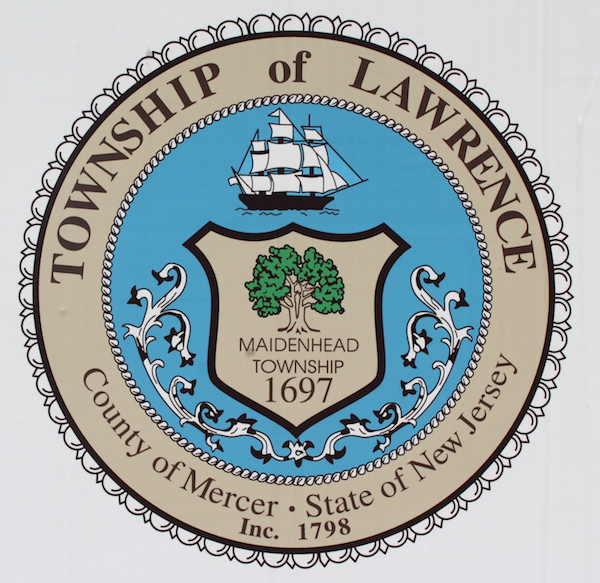The hardy band of marchers who commemorated the 58th annual Colonel Hand Historic March stepped off on a dreary Saturday morning – 242 years and 2 days after Colonel Edward Hand and his band of Pennsylvania riflemen held off British and Hessian troops on their way to what would become known as the Second Battle of Trenton on Jan. 2, 1777.
The annual march, which begins at the Lawrence Township Municipal Building and ends on the banks of the Shabakunk Creek at Notre Dame High School, was held on Jan. 4.
The event is a reenactment of the American patriot’s delaying tactics as they tried to hold off the British and Hessian troops. The troops were on their way from Princeton to retake Trenton from the Americans during the American Revolutionary War.
Students of Revolutionary War history are familiar with the First Battle of Trenton on Dec. 26, 1776; the Second Battle of Trenton on Jan. 2, 1777; and the Battle of Princeton on Jan. 3, 1777 – known collectively as the “Ten Crucial Days,” and the turning point in the war.
But what made those 10 days between Dec. 26, 1776 and Jan. 3, 1777 so crucial? Why did it happen here? How did these events – the three battles – change the course of history? What was it really all about?
Roger Williams, the keynote speaker at the Jan. 4 reenactment, answered those questions for the overflowing audience members at the Lawrence Township Municipal Building before they set off on the march.
Williams is the co-founder of the www.tencrucialdays.org website and the president of the Princeton/Cranbury Chapter of the Sons of the American Revolution. He is a Lawrence Township resident.
The answer to “what was it really all about” is simple, Williams said.
“These men believed in the Enlightenment ideals of the era. They were not going to adhere to what a monarch told them to do. They were in charge of their own destiny,” Williams said.
“That’s why we have city councils and elected leaders,” he said.
In the weeks and months that led to the 10 crucial days, General George Washington and his troops suffered numerous defeats at the hands of the British and Hessian soldiers.
Rhode Island, New York and New Jersey were occupied by the British during the late fall of 1776, and Washington confided in his cousin that “the war was all but over,” Williams said.
To keep the war alive and revive the soldiers’ flagging spirits, Washington needed a victory. They had been chased across New Jersey and into Pennsylvania. Consulting with his officers, Washington decided to attack the Hessian barracks in Trenton.
Washington led his soldiers across the Delaware River from Pennsylvania and successfully attacked the Hessian garrison in Trenton on Dec. 26, 1777 – the First Battle of Trenton. They retreated back to Pennsylvania to consider their next move.
“It couldn’t end this way. Washington had to get the British troops out of New Jersey,” Williams said.
Meanwhile, Major General William Howe, the commander-in-chief of the British troops in the North American colonies, wanted to punish the Americans for their attack and surprise victory over the Hessian troops in Trenton.
Howe called for Lord Cornwallis, a major general in the British army, to march to Trenton to take back the small village.
Cornwallis and 8,000 British and Hessian troops left Princeton on the morning of Jan. 4, 1777 for Trenton. Their route took them through Lawrence Township on the King’s Highway, known today as Route 206.
The British and Hessian troops’ goal was to reach Trenton during daylight to subdue the Americans. But Hand and his riflemen delayed them, shooting at them from behind cover in the woods.
When the troops finally arrived in Trenton near dusk, they tried three times to cross the bridge over the Assunpink Creek, behind which the Americans had set up battle lines.
Washington ended the battle on Mill Hill with a furious cannonade, preventing the British from capturing 5,000 American soldiers, Williams said.
The British decided to wait until morning to finish the battle. But in the middle of the night, Washington and his soldiers left Trenton and set off for Princeton – and what would become known as the Battle of Princeton.
The Americans met a contingent of British and Hessian troops on their way along a back road to Princeton. The Americans defeated the smaller group of soldiers in a short but fierce battle in the Battle of Princeton.
The victorious American soldiers, with three significant victories behind them, continued north and settled in Morristown for the winter.
“What happened on this road changed the course of history,” Williams said of Hand’s delaying tactics.
The British and Hessian soldiers would have overwhelmed Washington’s army in Trenton if they had arrived earlier in the day, Williams said.
Noting that the temperature on Jan. 2, 1777 was in the 40’s, as it was on Jan. 4, Williams told the attendees that as they embark on the recreated march, they should think about what happened.
Hand and 1,200 American troops held off 8-9,000 British and Hessian troops, he said.
“We are all stewards of this land and these historic sites – Trenton, Princeton, Washington’s Crossing and indeed, the Post Road [or Route 206],” Williams said.

